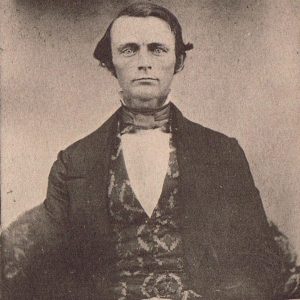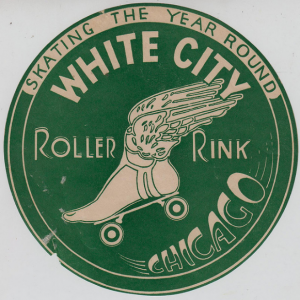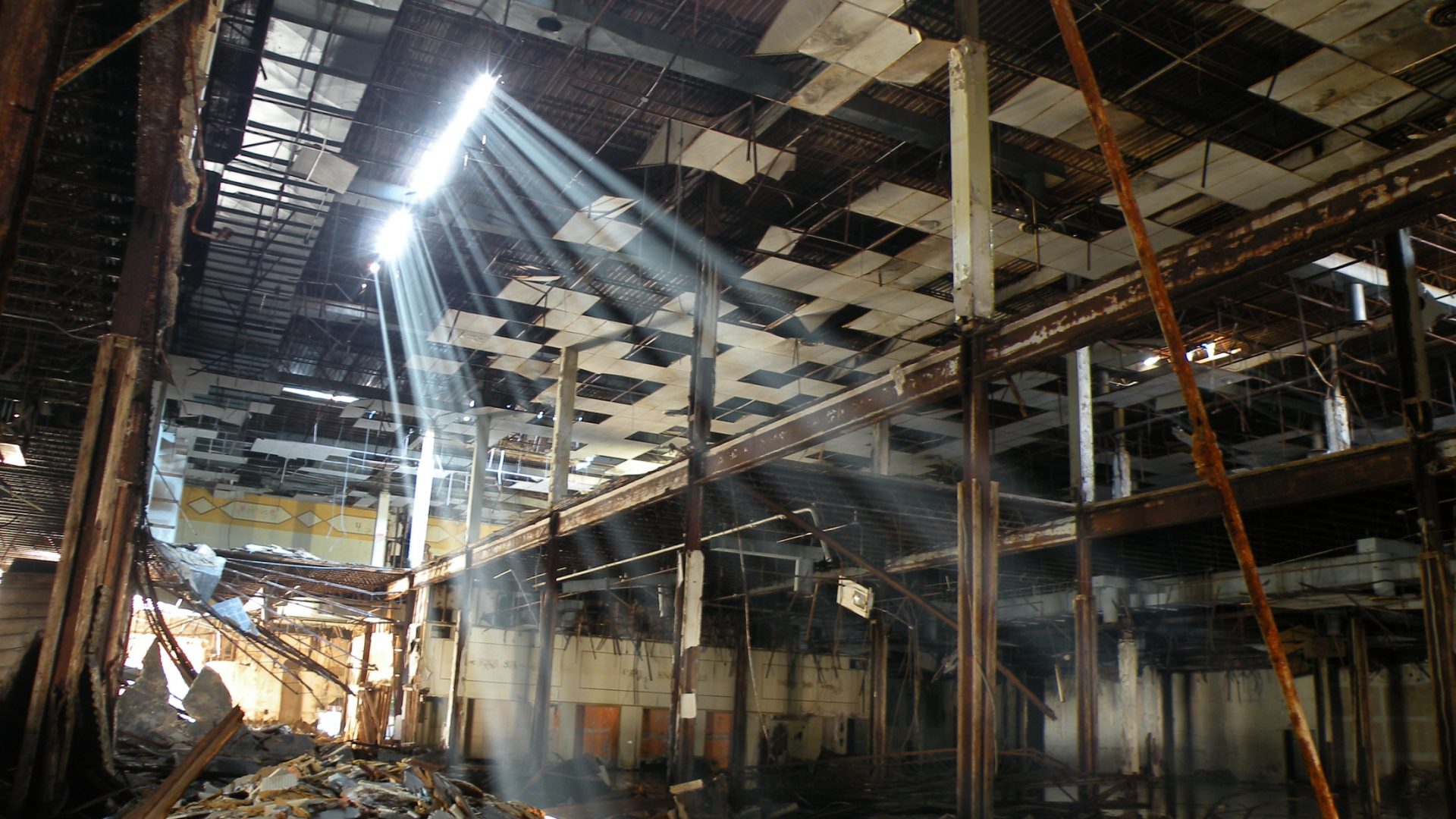| Origins | Settled by Paul Cornell in 1853 and annexed c. 1889 |
|---|---|
| Area | South Side |
| Boundaries | 61st Street to 63rd Street on the north, 79th Street on the south, Kenwood Avenue to Kimball Avenue to South Chicago Avenue on the east, Lasalle Street to Wentworth Avenue to Yale Avenue to Harvard Avenue to Stewart Avenue to Eggleston Avenue to Wallace Street on the west (western boundary resembles the shape of a staircase) |
| Gangs founded | New Breeds, |
| Gangs headquartered | Black Disciples, Black P Stones, Gangster Disciples, New Breeds, |
Greater Grand Crossing was settled and developed based upon tragedy which is the foreshadowing of the later suffering that was to come later.

In the year 1853 a major train accident happened that killed 18 passengers and injured 40 others at the spot of where 75th Street and Chicago Avenue presently intersect. This occurred because Roswell B. Mason (pictured) ordered the laying of tracks for the Illinois Central Railroad right over the rail line of the Lake Shore & Michigan Southern tracks. He had this done secretly and the lack of communication caused two trains moving along these lines to collide in a deadly crash. What is ironic is Mason became a Mayor in Chicago years later despite this incompetent decision. One good that came of this accident was the fact that the trains needed to slow down at this “Greater Grand Crossing” intersection which made the area more favorable for settlement now that a train stopped here.

The area was all swamps and prairies; however, in 1855 Paul Cornell found the area favorable and bought several acres to develop a subdivision to create a community here. English, Irish and Scottish immigrants were the first to buy up tracts of land in this area known as “Cornell” then later changed to “Grand Crossing.”
In the 1890s German immigrants moved into the Brookline section of the neighborhood and starting in the year 1893 when the Columbian Exposition came to nearby Woodlawn several more migrated to Greater Grand Crossing and many more homes and apartment buildings were constructed in the community.

After the World’s Columbian Exposition Chicagoans were hungry for more fairs and entertainment, then in 1905 Morris and Joseph Beifeld were eager to build an amusement park at the present-day intersection of 63rd Street and Martin Luther King Drive. The area was a prairie area with not much housing development which made the land ideal to place this amusement park. The name given to this park was “White City” and it was a very large park that offered burlesque shows, the first water ride in history, several games, freak shows, food stands, the park had it all including a game called the “African Dip” which was a game where patrons would pay to throw objects at the head an African American man, needless to say the game was extremely racist and highly inhumane but at this time it was seen as funny. African American men were allowed to work at the park in such booths as the African Dip; however, they were not allowed to enter the park for fun. White City only charged 10 cents a person for entry which would have been great cheap entertainment for the struggling black community in nearby Bronzeville, but blacks were not allowed, only allowed to be degraded in the African Dip game. White City stayed in operation for 28 years and was noticeable by its giant “Electric Tower” (pictured) that modeled after the Eiffel Tower in Paris, France. The tower could be seen as far north as the far north side of the city as its nighttime glow echoed across the sky.
In the year 1933 White City closed its doors due to the hardships of the Great Depression Era, not only that African Americans began to settle in the neighborhood much to the objections of the white community that now consisted of newly arrived Italian and Swedish decent. The African American population remained very small during the 1930s and 1940s decades.
In the year 1948 restrictive racial covenants were ruled as unconstitutional by the U.S. Supreme court and this brought about a larger influx of African Americans to the community.
In the 1950s-decade white flight became rapid as African Americans seeking an escape from the urban black ghettos sought a better middle-class life here, but block busting tactics from crooked real estate agents, the closing of several white owned businesses, redlining, disinvestment and slum lord landlords and deterioration devalued the neighborhood. Many of the earlier African Americans that settled in the neighborhood were actual homeowners which was a positive thing; however, slum lords renting run down apartments and houses brought the area into a state of disrepair. The “Black Belt” was then extended down State Street into this neighborhood from 61st Street to 71st Street along State Street, making Greater Grand Crossing the final part of the black belt according to some sources.

In the year 1946 the amusement park White City was sold to the Chicago Housing Authority; however, the White City Roller Rink was still open and still did not allow blacks to enter, this caused many black residents to protest outside the rink and many fights between blacks and whites would break out near the rink. In the year 1946 the rink was sued over racial discrimination by the Congress of Racial Equality right after the rest of the land was sold to CHA. As of 1946 the rink now changed hands to become the “Park City Rink” in order to shed the old racist roots of White City and it now had to allow all races to skate there until it closed down in 1958 and that brought the end to the electric tower that was originally built for White City.
Beginning in 1950 the Parkway Gardens public housing project was built over the same exact lands the White City Park once stood between 63rd Street to 66th Street and Martin Luther King Drive to Calumet Avenue. The grounds that once housed a very racist amusement park for whites were now the site of public housing for poor blacks, which is very ironic.
In the year 1958 which flight moved into the fast lane as the construction on the new Dan Ryan Expressway displaced many impoverished black families into neighborhoods like Greater Grand Crossing. Just like Englewood and Woodlawn Greater Grand Crossing was heavily favored for steering tactics to get impoverished blacks to move onto these streets. White flight was devastating on this community as lenders marked this neighborhood as a redlined district. The neighborhood then began to fall into blight and extreme poverty.
In the year 1959, the Devil’s Disciples and Egyptian Cobras settled in this neighborhood amidst a migration wave each gang began in that year. Greater Grand Crossing had become a high crime impoverished community that had many undesirables living in these borders as white flight and disinvestment devastated this community, Disciples and Cobras arrived to protect the community from undesirables but ended up fighting each other. The social work of Strodtbeck and Short discovered Cobras on these streets in 1959 and documented their wild behavior.
In the year 1960, the Blackstone Rangers settled in this community that would eventually outnumber and take over most of Egyptian Cobra territory.
The projects became extremely violent by the 1970s as the CHA and police began to neglect the complex leaving drugs, guns and gangs to take over as the buildings deteriorated. The Parkway Gardens became completely ruled by the Black Gangster Disciples in the 1970s.
During the 1980s and 1990s extreme gang violence, urban blight and drug trafficking flowed freely on these streets as Greater Grand Crossing became one of Chicago’s most violent and dangerous neighborhoods in the city. The Parkway Gardens became the site of gang wars between Gangster Disciples and Black Disciples in the 1990s as the projects were referred to as “O-Block.”
Beginning in the late 1970s these streets were hotly contested as El Rukns and Conservative Vice Lords began laying strong claim to these coveted streets. Mickey Cobras also once had a strong presence here but many converted to joining other groups in later years. The 1980s were wild times on these streets with many shootings and gang wars.
In the year 2007 some hope came to the community when Theaster Gates rehabbed multiple buildings as art centers, despite his efforts the community still remains in a high state of extreme poverty, blight, gang violence and drugs. There are also several shuttered homes, and many have been abandoned for several years. Greater Grand Crossing is indeed one of the more blighted neighborhoods of Chicago as many larger homes and even mansions have long been vacated.
This neighborhood is known to be one of the more violent neighborhoods in Chicago often making top 10 or even top 5 lists as the most violent and dangerous neighborhoods in the city. In the 2010s decade the Parkway Gardens projects were renovated.
For many decades Gangster Disciples, Black Disciples and Black P Stones dominate these streets.
Here is a list of significant gangs that have walked these streets over time:
Black P Stones Established 1960-present years
69th to 70th, Michigan to Indiana (Kuwait City)
75th to 76th, St. Lawrence to Champlain (GMB)
73rd & Vincennes
79th & Vernon (Shared with Black Disciples)
Mickey Cobras Established as Egyptian Cobras 1959-1960s
71st & Kimbark
Gangster Disciples Established as Devil’s Disciples 1959-present years
71st & Vincennes (White Walls)
72nd & Woodlawn (Pocket Town, shared with New Breeds)
Dorchester from 72nd to 75th (Sircon City)
79th & Ellis (Lon City)
79th & Ingleside
79th & St. Lawrence
69th to 70th, Normal to Harvard (Brick Squad Jojo World) border with Englewood
68th to 71st, Wentworth to Lafayette (Tay City)
74th to 75th, Vincennes to Wentworth (Bodie World)
71st to 72nd, Eberhart to Rhodes (D Block SBSG)
78th to 80th, St. Lawrence to Cottage Grove (Hittzsquad Evansmobb) partially in Chatham
69th & Michigan
69th & Martin Luther King Dr
73rd & St. Lawrence
75th & Princeton
75th & Eberhart
76th & Calumet
77th & Cottage Grove (Insane Gangster Disciples)
76th to 79th, Vincennes to Normal (Boys Town)
New Breeds Established 1981-present years
71st to 75th, South Chicago Ave to Kimbark (CTG Pocket Town) Established 1981-present years
Conservative Vice Lords Established 1979-present years
76th & Ellis
74th to 76th, Martin Luther King Dr to Ingleside (KTS, formerly know as 5th City)
Unknown Vice Lords
73rd & Cottage Grove
All images below are photos of buildings taken when they were vacant. All photos below are courtesy of Google Maps.

































































































